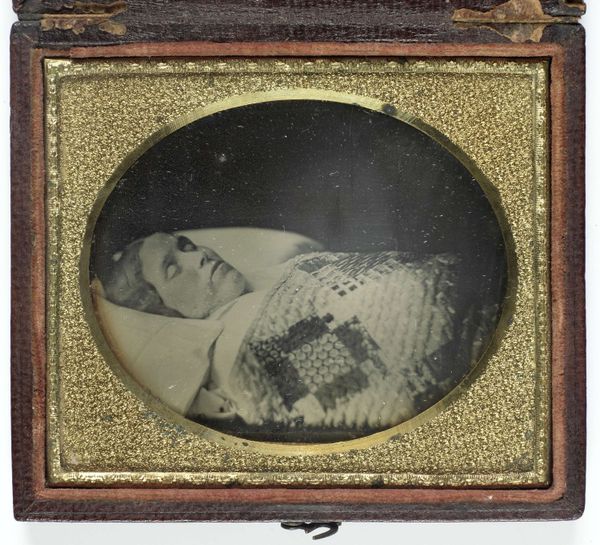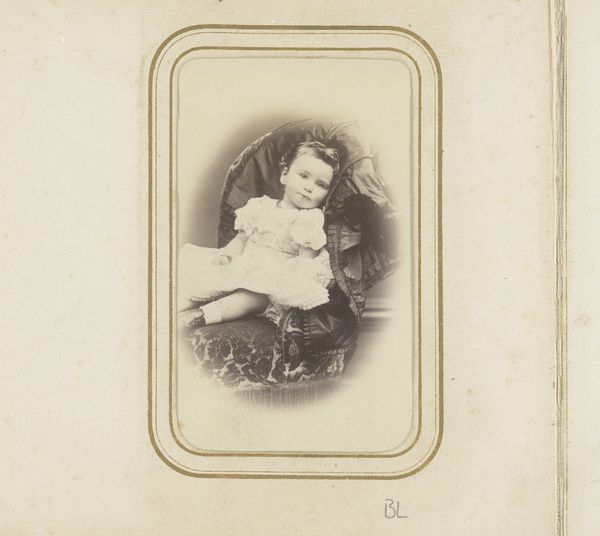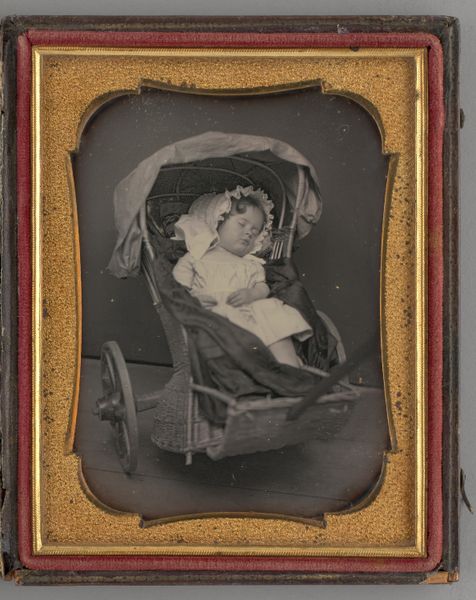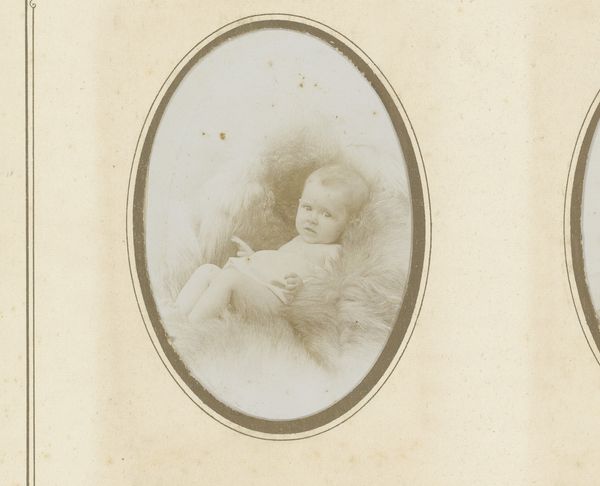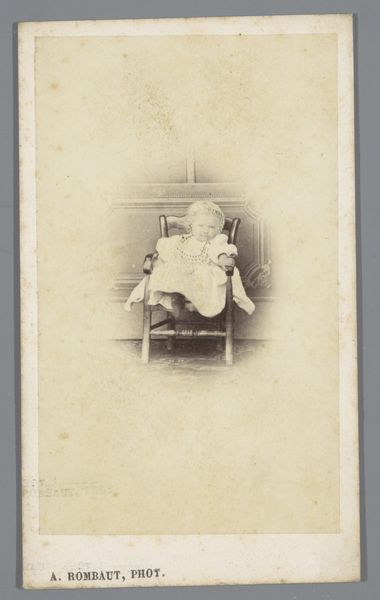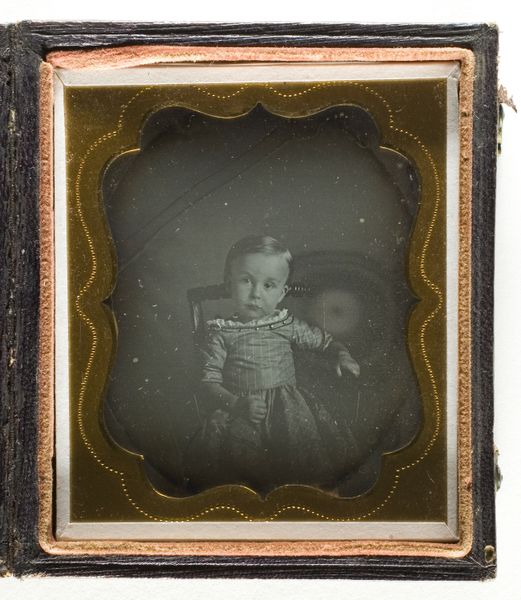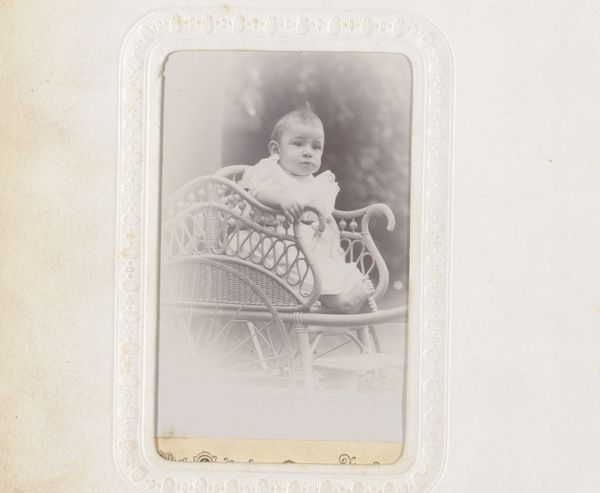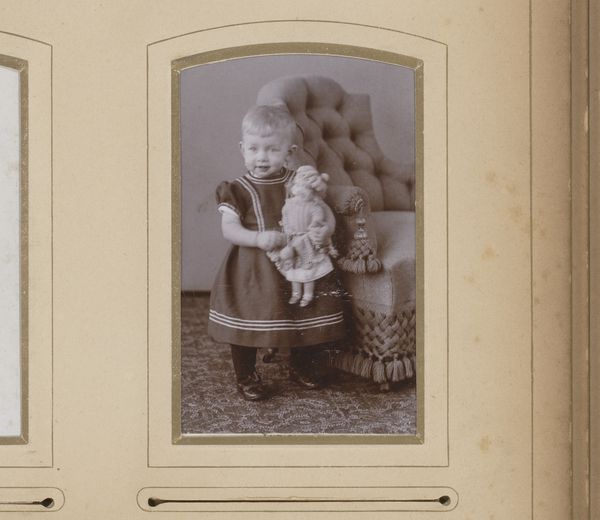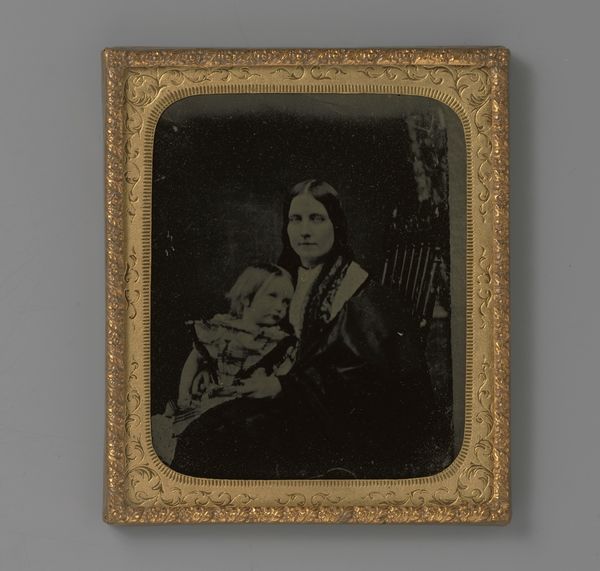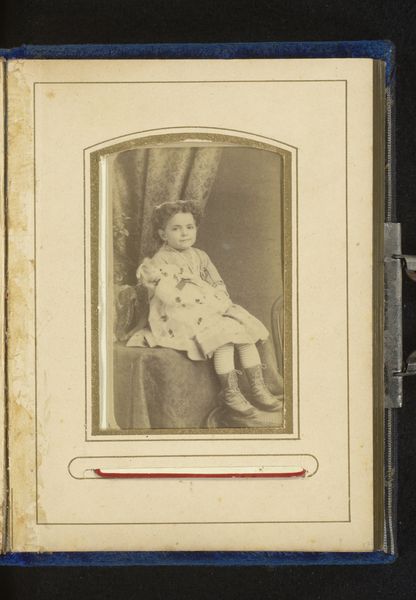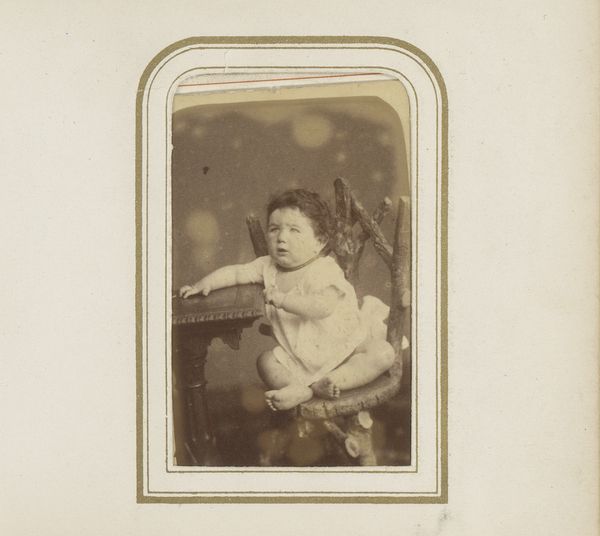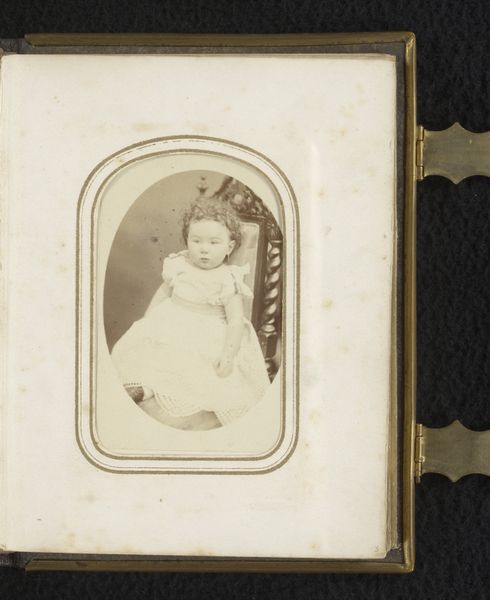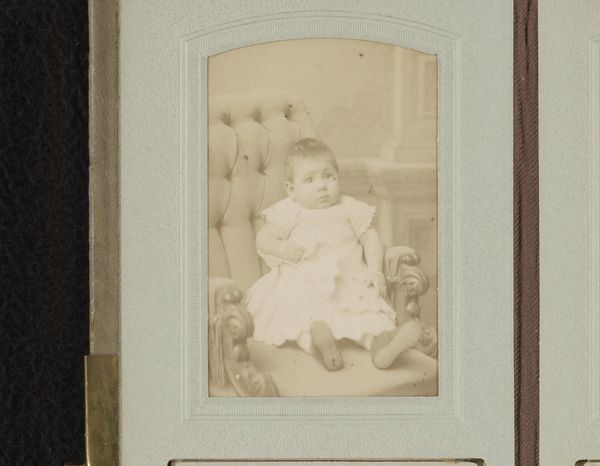
Dimensions: 7 × 8.3 cm (plate); 8 × 9.2 × 1.5 cm (case)
Copyright: Public Domain
Editor: Here we have an untitled albumen print from between 1850 and 1874, titled "Postmortem of Child." It’s a poignant image. I can't help but feel a sense of sadness looking at it. How do you interpret this work, especially considering its historical context? Curator: You're right, it is affecting. Postmortem photography was a practice deeply intertwined with 19th-century mourning rituals. Infant mortality was tragically common, and a photograph might have been the only lasting image of a child. Understanding the socio-cultural role of photography then, it served less as art and more as a commemorative object, almost a secular relic. The act of commissioning this wasn’t necessarily morbid; it was often a loving gesture, an attempt to hold onto a fleeting presence. What do you notice about the child's presentation? Editor: I see what looks like peaceful repose. Almost like the child is asleep. They seem to be carefully posed. What strikes me, however, is the inherent tension; it's meant to comfort, yet it’s undeniably unsettling to our contemporary eyes. Curator: Exactly. The seemingly serene presentation underscores a cultural need to soften the blow of death, particularly of a child. Museums and galleries have shifted the way we interact with postmortem photography over time. Initially, these images were circulated privately within families. Their display in public spaces today, within the neutral environment of the museum, invites us to consider broader questions: about grief, representation, and our own relationship with mortality. What does displaying images like this in an institution like the Art Institute do? Editor: It reframes our perception, moving it from a personal memento to a historical document, open to public interpretation and debate, wouldn’t you say? Curator: Precisely! It also highlights how institutions play a powerful role in shaping collective memory and understanding. This photograph serves as a reminder of how cultural values and the public’s relationship with images evolve. Editor: I see, the role of the institution truly shifts the dynamic between the photograph, it's inherent historical themes, and the audience, prompting wider discourse.
Comments
No comments
Be the first to comment and join the conversation on the ultimate creative platform.
